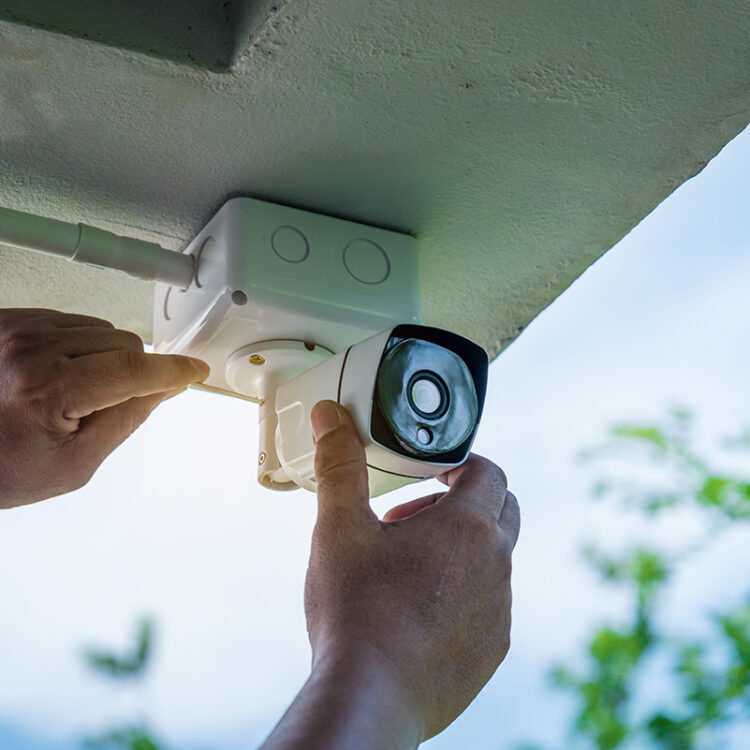CCTV Camera Installation NYC
CCTV Camera Installation NYC is a premier service that offers top-quality, cutting-edge surveillance systems tailored to meet the unique security needs of businesses and homeowners in the bustling metropolis of New York City. With an unwavering commitment to excellence, our team of skilled technicians possesses extensive knowledge and expertise in installing state-of-the-art CCTV cameras that provide unparalleled video monitoring capabilities. Understanding the diverse urban landscape and rising security concerns, we employ strategic placement techniques to ensure comprehensive coverage throughout residential complexes, commercial centers, offices, and public spaces.
CCTV Installations NYC
Utilizing advanced technologies such as high-resolution cameras with night vision capabilities, motion detection sensors paired with intelligent analytics software, and central monitoring stations equipped with real-time notifications, our installations guarantee maximum protection against potential threats. Moreover, we offer customized solutions that cater specifically to various industry sectors, such as retail establishments seeking loss prevention or construction sites requiring project supervision. For every installation project undertaken by our esteemed professionals at CCTV Camera Installation NYC, meticulous planning combined with seamless integration into existing infrastructure ensures optimal performance while maintaining utmost respect for privacy regulations and local laws governing electronic surveillance systems.
CCTV Camera Installation: The Complete Guide
Crime is on the rise, and there’s no doubt that video footage is playing a big role in helping law enforcement solve cases. CCTV (or “closed-circuit television”) cameras are a great way to protect your business and keep an eye on your property while you’re away. In this guide, we’ll teach you everything you need to know about installing CCTV cameras: from choosing the right camera for your needs to setting up the system and monitoring it remotely. We’ll also discuss some of the benefits of CCTV camera installation and how to get the most out of them. Ready to make your business safer? Start reading!
What is CCTV camera installation?
CCTV camera installation is a process that can be used to monitor your property or business. There are different types of CCTV camera installations, so it’s important to choose the right one for your needs.
There are two main types of CCTV camera installation: indoor and outdoor. Indoor CCTV cameras are placed inside a building, while outdoor cameras are installed on the outside. Each type has its own benefits and drawbacks.
The Benefits of Indoor Cameras:
-Indoor cameras help you keep an eye on activity in specific areas of your property or business.
-They’re easy to install and maintain, making them a good option if you want to start using CCTV but don’t have much experience with it or if you want to upgrade an existing system without having to replace all the hardware.
-Indoor cameras can also be used as security devices, helping you deter crime by recording footage of people who break into your property or try to steal from your store.
The Disadvantages of Indoor Cameras:
-Indoor cameras tend to have poorer resolution than outdoor cameras, which means they won’t be able to capture as much detail.
-They can be more expensive than outdoor cameras and may not be suitable for areas where weather conditions are harsh or where there is a lot of traffic movement.
The Benefits of Outdoor Cameras:
-Outdoor cameras provide better resolution than indoor cameras and can capture footage
Types of CCTV camera installation
There are a variety of types of CCTV camera installation, so it’s important to know what type you need before you make your purchase. Here are the three main types:
1. Fixed cameras: These cameras are usually placed in one specific location and stay there permanently. They’re good for capturing footage of areas that need constant surveillance, such as an entranceway or lobby.
2. Swivel cameras: These cameras can rotate around a central point to capture a wider view of the area they’re monitoring. This is ideal for areas that don’t have a fixed camera nearby, like an entire floor of a building or an entire parking lot.
3. Pan/tilt cameras: These cameras move along two axes (pan) or up and down (tilt), allowing them to capture footage from different angles. This is great for catching people or vehicles breaking the law in secret; no one will know they’re being watched unless they happen to walk in front of the camera!
The different types of CCTV cameras
There are a variety of types of CCTV cameras on the market, each with its own set of benefits and drawbacks.
Here we will discuss the different types of CCTV cameras and their corresponding uses.
1) Analog CCTV Camera: An analog CCTV camera is the oldest type of camera still in use today. These cameras are large and bulky, making them difficult to move around. They are also not as sensitive as other types of cameras, meaning they may not be able to pick up certain details. However, analog cams are cheaper and more common than digital cameras.
2) Digital CCTV Camera: A digital CCTV camera is a recent innovation in surveillance technology. Digital cameras are smaller and more sensitive than analog cameras, meaning they can capture finer details and images. They also have the ability to record footage in real-time, which makes them particularly useful for catching breaking events or crimes in progress.digital cams can be quite expensive, but they offer many advantages over traditional surveillance methods.
3) IP Cameras: IP cameras are similar to digital cameras in that they capture images using sensors that detect light waves instead of photo film. However, unlike digital cameras, IP cameras can transmit footage wirelessly to a networked device, allowing for real-time monitoring from a remote location. This makes them ideal for security purposes or situations where video quality is important (such as hospitals or retail stores).
4) Micro CCD Camera: A micro C
How to choose the right CCTV camera for your needs
When it comes to choosing the right CCTV camera for your needs, there a few things you need to keep in mind.
First and foremost, you’ll want to make sure that the camera is adequately sized for the space it will be installed in. Second, you’ll want to consider the features that the camera offers and what kind of footage you’ll be most interested in recording. Third, make sure that the camera is compatible with your surveillance system and network. And finally, be sure to choose a CCTV camera that has been certified by an accredited organization.
Below are some helpful tips when choosing the right CCTV camera for your needs:
1. Size Matters
Make sure that the CCTV camera is appropriately sized for the space it will be installed in. A smaller camera may not provide enough footage to cover a large area, while a larger camera might be too bulky or difficult to install.
2. Features Matter
Consider what features the CCTV camera offers and what kind of footage you’re most interested in recording. Some cameras offer night vision capabilities, while others can capture high-resolution video or digital images.
3. Compatibility Matters
Choose a CCTV camera that is compatible with your surveillance system and network infrastructure. Make sure you have an appropriate cable and adapter kit available to connect it to your network.
How to install a CCTV camera
If you are looking to install a CCTV camera, there are a few things you need to keep in mind. First, make sure that the area you want to cover is large enough for the camera. Second, decide what type of camera you want to buy and how big it will be. Third, find an installation company that can help you get your camera set up properly. Fourth, read through this guide to learn everything you need to know about CCTV installation!
To start, make sure that the space you’ll be covering is large enough. Most cameras are designed to cover an area of around 100 square feet (9 meters squared). If your space is smaller, you may need to buy a cheaper camera or add more cameras to cover the same area.
Next, decide what type of CCTV camera you want. There are three main types of cameras: analog, digital and IP cameras. Analog cameras use physical switches to change the image from black and white into color. Digital cameras store images on a hard drive and can display them in either black and white or color. IP cameras use Internet Protocol technology so they can send images over the internet.
Analog and digital cameras both have their pros and cons; for example, digital cameras are usually more expensive but they can also reproduce colors more accurately than analog cameras. IP cameras have advantages over analog and digital as well; for example, they don’t need external power so they can be used in places where power
Conclusion
In this guide, we will walk you through the basics of CCTV camera installation, from choosing the right type of camera to installing it properly. We will also provide tips on how to protect your security system and keep it running smoothly. By the end of this guide, you should be able to install a CCTV camera without any problems!





